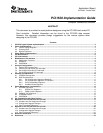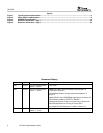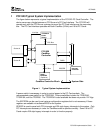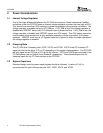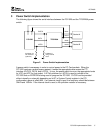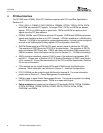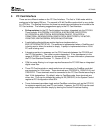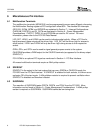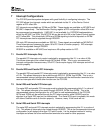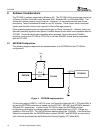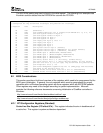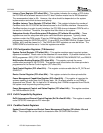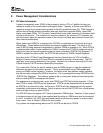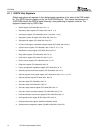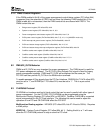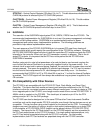
SCPA033
PCI1520 Implementation Guide 7
5 PC Card Interface
There are two different modes on the PC Card interface. The first is 16-bit mode which is
analogous to the legacy ISA bus. The second is 32-bit CardBus mode which is very similar
to a PCI Bus. The terminal functions for these two modes are multiplexed and routed to the
PC Card sockets. The following suggestions apply to the PC Card interface:
• Pullup resistors for the PC Card interface have been integrated into the PCI1520.
These include: A14/CPERR#, A15/CIRDY#, A19/CBLOCK#, A20/CSTOP#,
A21/CDEVSEL#, A22/CTRDY#, BVD2(SPKR#)/CAUDIO, CD1#/CCD1#,
CD2#/CCD2#, INPACK#/CREQ#, READY/CINT#, RESET/CRST#, VS1#/CVS1,
VS2#/CVS2, WAIT#/CSERR#, WP(IOIS16#)/CCLKRUN#.
• A switchable pullup/pulldown resistor has been implemented on
BVD1(STSCHG#)/CSTSCHG. The pulldown is implemented when a CardBus card
is being used or when the socket is empty. A pullup is implemented when a 16-bit
PC card is being used.
• A damping resistor is necessary on the CCLK terminals between the PCI1520 and
the PC Card sockets. The value is system dependent. If line impedance is in the
range of 60-90Ω,a47Ω resistor is recommended. For more information, please see
the PC Card Standard Revision 7.1, Section 5.3.2.1.4.
• CD# line noise filtering is no longer required because the PCI1520 has an integrated
digital noise filter.
• Three PC Card terminals on each socket are not necessary for CardBus mode but
are necessary for 16-bit mode. These terminals are: CRSVD/D14, CRSVD/A18, and
CRSVD/D2. These terminals must be connected to the PC Card Socket according to
their 16-bit designations. By default, when in CardBus mode, these terminals are
driven low. They can be tristated by setting bit 22 (CBRSVD) in the System Control
register at PCI configuration offset 80h.
• Texas Instruments provides single socket CardBus controllers such as the PCI1510
for systems requiring only one PC card socket. However, the PCI1520 can be used
as a single socket controller simply by leaving the Socket B interface floating.



